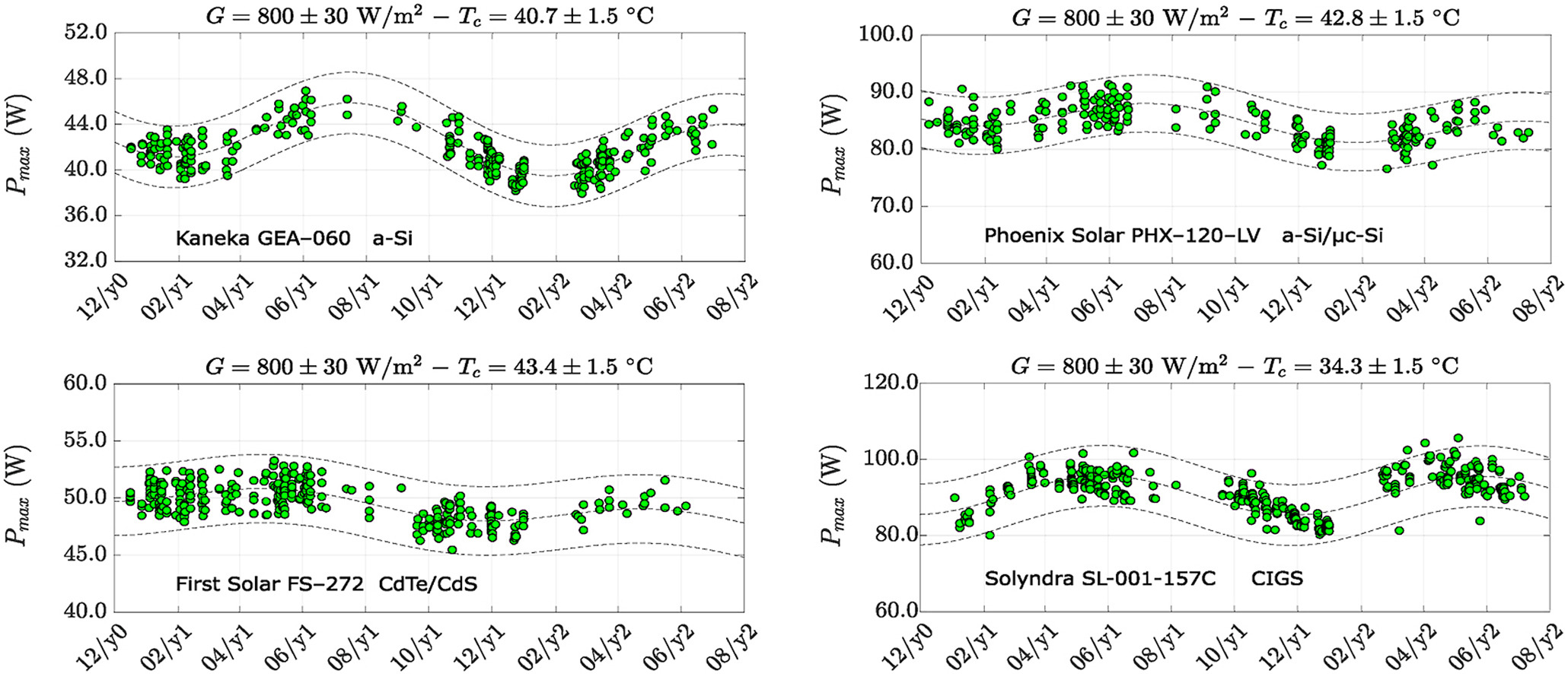
New model to study the outdoor degradation of thin-film photovoltaic modules
M. Piliougine, P. Sánchez-Friera, G. Petrone, F.J. Sánchez-Pacheco, G. Spagnuolo, M. Sidrach-de-Cardona, Renewable Energy, 193, 857-869, 2022.
The performance of four thin-film photovoltaic modules is analyzed after an initial stabilization period and a subsequent outdoor exposition. The seasonal variations and the degradation rates of a single-junction hydrogenated amorphous silicon (a-Si:H) module, a tandem amorphous microcrystalline Silicon (a-Si/μc-Si) module, a heterostructure cadmium sulfide-cadmium telluride (CdS/CdTe) module and a copper indium gallium selenide (CIGS) are examined and correlated to spectral changes. The I–V curves have been measured every 5 min; the electrical parameters and parasitic resistances have been identified. By exploiting a number of experimental measurements acquired within a narrow interval of irradiance and cell temperature, a novel mathematical model has been developed and fitted: it considers a stationary seasonal variation component and a linear long-term degradation component. The results show annual power degradation rates of 4.0% for the a-Si:H module, 3.4% for the a-Si/μc-Si and 3.5% for the CdS/CdTe, whereas for the CIGS module the annual degradation is not significant, i.e. 0.2%.



